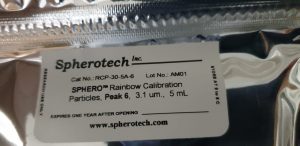Single-cell platforms present statistically massive samples of snapshot observations able to resolving intrercellular heterogeneity. Currently, there’s a rising literature on algorithms that exploit this attribute with a purpose to infer the trajectory of organic mechanisms, akin to cell proliferation and differentiation. Despite the efforts, the trajectory inference methodology has not but been used for addressing the difficult drawback of studying the dynamics of protein signaling methods. In this work, we assess this prospect by testing the efficiency of this class of algorithms on 4 proteomic temporal datasets. To consider the educational high quality, we design new general-purpose analysis metrics which can be capable of quantify efficiency on (i) the organic which means of the output, (ii) the consistency of the inferred trajectory, (iii) the algorithm robustness, (iv) the correlation of the educational output with the preliminary dataset, and (v) the roughness of the cell parameter ranges although the inferred trajectory. We present that experimental time alone is inadequate to offer data concerning the order of proteins throughout sign transduction. Accordingly, we present that the inferred trajectories present richer details about the underlying dynamics.
We be taught that established strategies examined on high-dimensional information with small pattern dimension, sluggish dynamics, and sophisticated constructions (e.g. bifurcations) can not all the time work within the signaling setting. Among the strategies we consider, Scorpius and a newly launched strategy that mixes Diffusion Maps and Principal Curves had been discovered to carry out adequately in recovering the development of sign transduction though their efficiency on some metrics varies from one dataset to a different. The novel metrics we devise spotlight that it’s tough to conclude, which one methodology is universally relevant for the duty. Arguably, there are nonetheless many challenges and open issues to resolve. © 2020 The Authors. Cytometry Part A printed by Wiley Periodicals, Inc. on behalf of International Society for Advancement of Cytometry. Mushrooms have been extensively thought of as well being meals as their extracts have anti-hypertensive and anti-tumor actions. After an intensive literature survey, we hypothesized that enzymes in mushroom extracts play an vital function in synthesizing practical molecules. Therefore, on this examine, proteins extracted from reishi mushroom (Ganoderma lucidum), which is utilized in oriental medication, had been recognized by the proteomic strategy, and acceptable extraction strategies for bettering angiotensin-converting enzyme (ACE) inhibitory actions had been investigated.
Proteomics in Veterinary Medicine and Animal Science: Neglected Scientific Opportunities with Immediate Impact.
Animal/veterinary proteomics is an evolving subject which holds an awesome promise not just for basic and utilized discoveries relating to biology and pathology of home species, however will also be carried out in comparative functions of human illnesses analysis. Experimental proteomics in home animals have benefits over use of rodents, akin to a number of sampling in time sequence and availability of organic samples in ample quantity for a number of analyses, such that each experimental and pure illness processes could be investigated.
While there are particular technical limitations within the growth of the sector, they’ll at the moment be circumvented and sooner or later mastered with a larger participation of proteomic specialists, which is able to in flip drive the accessibility of species-specific reagents, information quantity growth in bioinformatic databases, and elevated funding. This Viewpoint highlights some comparative proteomics research addressing vital points and encourages readers to increase their horizons of home animal proteomics analysis. It will hopefully encourage new fruitful collaborations between veterinary and animal scientists and proteomic specialists for analysis in these areas that may have instant and direct affect on well being, society, and the economic system.

Differential proteomic evaluation of synovial fluid from hip arthroplasty sufferers with a pseudotumor vs. Periprosthetic osteolysis .
Adverse tissue reactions to metallic implants, together with pseudotumors, can compromise implant performance and survivorship. The identification of particular proteins within the synovial fluid (SF) of hip arthroplasty sufferers with a pseudotumor could result in a greater understanding of the underlying pathomechanisms. The goal of the current examine was to match the protein content material of SF from sufferers with a short-term metal-on-metal hip implant related to a pseudotumor and sufferers with a long-term metal-on-polyethylene hip implant related to periprosthetic osteolysis.
Discovery proteomics was used to establish differentially ample proteins in albumin-depleted SF. In toto, 452 distinct proteins (current in at the very least half of the sufferers in a single or each teams) had been recognized. Thirty of those 452 proteins had been differentially ample between the 2 teams, together with two potential biomarkers: 6-phosphogluconate dehydrogenase (which performs a significant protecting function in opposition to oxidative stress) for the pseudotumor group, and scavenger receptor cysteine-rich kind 1 protein M130 (which is concerned in low-grade irritation) for the periprosthetic osteolysis group. Other differentially ample proteins recognized recommend the presence of an adaptive immune response (notably a type-IV hypersensitivity response), necrosis, and larger oxidative stress in sufferers with a pseudotumor.
[Linking template=”default” type=”products” search=”antibody to or anti-DOG SERUM” header=”2″ limit=”138″ start=”4″ showCatalogNumber=”true” showSize=”true” showSupplier=”true” showPrice=”true” showDescription=”true” showAdditionalInformation=”true” showImage=”true” showSchemaMarkup=”true” imageWidth=”” imageHeight=””]
They additionally recommend the presence of an innate immune response, oxidative stress, tissue reworking, and apoptosis in each affected person teams, though variations within the particular proteins recognized in every group level to variations within the pathomechanisms. Overall, outcomes present insights into the molecular mechanisms underlying metal-related pseudotumors and periprosthetic osteolysis, and will finally assist elucidate pseudotumor etiology and assess the danger that asymptomatic pseudotumors will grow to be an aggressive lesion. © 2018 Orthopaedic Research Society.